The Geminid Meteor Shower Is Back And will Peak On Sunday And Monday This Week. It’s supposed To



The Geminid meteor shower is back and will peak on Sunday and Monday this week. It’s supposed to be one of the most promising events of the year with roughly 50 shooting stars an hour. How, when and where to watch the spectacular event.
More Posts from Curiositytherover and Others

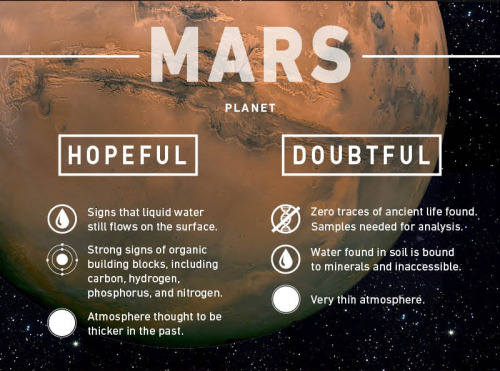
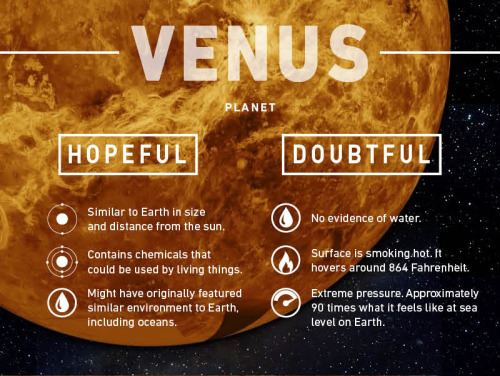
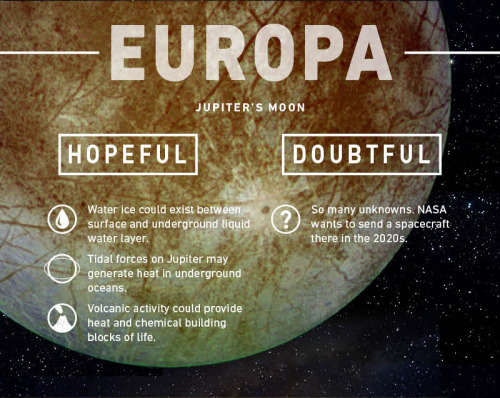
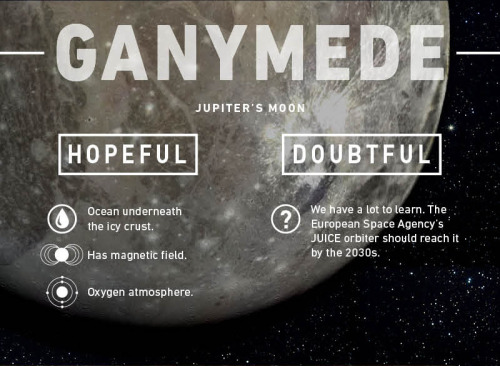



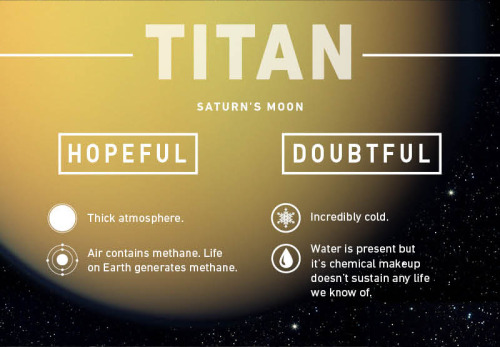
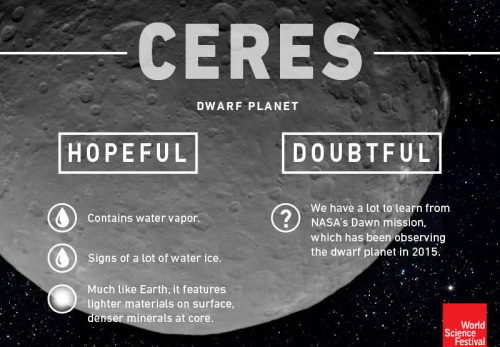
Where Could Life Exist?
When NASA scientists announced earlier this year that they had found evidence of liquid water on Mars, imaginations ran wild with the possibility that life could exist somewhere other than here on Earth.
Scientists continue to explore the possibility that Mars once looked a lot like Earth — salty oceans, fresh water lakes, and a water cycle to go with it. That’s exciting stuff.
So where else are they looking? What exactly are they looking for?
There are nine places in our universe where scientists say life is a possibility. The locations range from a smoking hot planet like Venus to a moon that orbits Saturn called Enceladus, which looks a lot like a massive, tightly-packed ball of ice.
All of these places show signs that water is, or at least was, a possibility. They also appear to feature some kind of energy that could produce heat.
full resolution
Can we talk about this?
So there’s this physics journal that uses math and science to discuss the realities of fictional universes in a super legit, peer-reviewed manner?
And they did a thing on Frozen?

Combining research on the film?

With info on how water works and stuff?

Then applied math and chemistry (and other things in which I am not especially well versed) to reach this conclusion:

So.

Hitchhiking a Ride to Space
Have you ever packed for a long trip with a friend and ran out of space in your suitcase? Maybe your friend was nice and let your spare items hitchhike a ride in their bag? The following science experiments are doing something similar on our Space Launch System rocket.

Our Space Launch System (SLS) will be the most powerful rocket we’ve ever built and will enable astronauts in the Orion spacecraft to travel deeper into the solar system. This advanced launch vehicle will launch astronauts to an asteroid and eventually to Mars, while opening new possibilities for other payloads including robotic scientific missions to places like Mars, Saturn and Jupiter.

The primary goal of SLS and the Orion spacecraft is to launch future crewed, deep space missions. That said, an added bonus of this powerful rocket is the extra science it can carry. On it’s first mission (known as Exploration Mission-1, EM-1) SLS will carry 13 CubeSats (small satellites, each the size of a large shoebox) on its first flight as secondary payloads. These small satellites will perform various in-space experiments. In a way, these 13 CubeSats are ‘space hitchhikers’, catching a ride to deep space where they can gather data valuable to future exploration missions.

How were these 13 experiments selected? Great question. They were selected through a series of announcements of flight opportunities, a public contest and negations with our international partners.
These secondary payloads have a vast array of functions, from taking pictures of asteroids, to using yeast to detect impacts of deep-space radiation. Each month we will highlight one of these experiments on Tumblr and talk about all the exciting science they will do. Just to give you an idea of what these shoebox-sized satellites will do, we’ll give you a preview:
1. NEA Scout

NEA Scout, stands for: Near-Earth Asteroid Scout. This CubeSat will investigate an asteroid, taking pictures and observe its position in space.
2. BioSentinel

BioSentinel will be the first time living organisms have traveled to deep space in more than 40 years. It will use yeast to detect, measure and compare the impact of deep-space radiation on living organisms over long durations in deep space.
3. Lunar Flashlight

This experiment will look for ice deposits and identify locations where resources may be extracted from the lunar surface. It will demonstrate the capability to scout for useful materials and resources from lunar orbit.
4. Skyfire

Lockheed Martin’s Skyfire will perform a lunar flyby, collecting data to address both Moon and Mars Strategic Knowledge Gaps, or gaps in information required to reduce risk, increase effectiveness and improve the design of robotic and human space exploration missions, for surface characterization, remote sensing and site selection.
5. Lunar IceCube

Morehead State University’s Lunar IceCube will look for water in ice, liquid and vapor forms from a very low orbit of only 62 miles above the surface of the moon. The ability to search for useful resources can potentially help astronauts manufacture fuel and necessities to sustain a crew.
6. CuSP

The CubeSat mission to study Solar Particles, or CuSP, will be the first protype of an interplanetary CubeSat space weather station. It will observe space weather events hours before they reach Earth.
7. Luna-H-Map

Lunar Polar Hydrogen Mapper (LunaH) will enter a polar orbit around the moon with a low altitude. From there, it will produce maps of near-surface hydrogen.
8, 9, 10. Three Tournament Payloads

Three of the payloads riding along on this journey will be the winners of the Ground Tournaments portion of our CubeQuest Challenge. This challenge is designed to foster innovation in small spacecraft propulsion and communications techniques. Learn more about this challenge HERE.
11, 12, 13. International Partners
The remaining three payloads are reserved for international partners, and will be announced at a later time.
To stay updated on these experiments, visit: http://www.nasa.gov/launching-science-and-technology.html
Make sure to follow us on Tumblr for your regular dose of space: http://nasa.tumblr.com

(via Biological & Popular Culture // Dino Pet)
Bio-luminescent dinoflagellates…

The size of the Orion spacecraft vs Apollo.

The oldest fossils ever discovered have been found in Greenland, and they appear to have preserved the earliest signs of life of Earth.
Dated to around 3.7 billion years ago, the fossils contain evidence of stromatolites - layers of sediment packed together by ancient, water-based bacterial colonies - and could push back the origins of life in the fossil record by 220 million years.
Read more…



The simple discovery that a piece of wire mesh can stop a flame in its tracks saved the lives of thousands of miners.
This demonstration shows how a simple lamp made of gauze could contain the open candle flames that miners used before 1815. With the safety lamp, any potential explosions would stay contained and never escalate to dangerous levels (although mining remained an extremely dangerous occupation).
Watch the whole demo and hear the full story here.

Space exploration is pretty amazing right now. Just yesterday, we launched the ExoMars 2016 spacecraft, which will hunt for signs of life on Mars, and by now, the Voyager 1 spacecraft is likely way out in interstellar space. NASA recently announced that it plans to visit Europa, one of the most promising candidates in our Solar System to host life, and even NASA’s chief scientist thinks we’ll find alien life within 20 to 30 years, as long as we keep exploring.
But how do you keep track of all these awesome space missions? To help out,the guys at Pop Chart Lab have created this beautiful poster showing our space exploration to date. It spans all the way from 1959 to 2015, and features over 100 exploratory probes, landers, and rovers.
As you can see on the poster below, the majority of our machines never leave Earth’s orbit. There are a whole lot of crowded lines near our planet, each of which belongs to a space probe or explorer of some kind. But as you get further from Earth, there are less and less of these brave explorers, and you get to see just how far humanity has travelled into our Solar System.

Total Recall Sounds Great, But Some Things Should Be Forgotten
Imagine never again forgetting where you parked your car, or that last item you had on your grocery list, or why you walked into this room anyway. If you trust media stories about research currently under way at Defense Advanced Research Projects Agency (DARPA) to build an implantable device to restore memory, you might not have to worry about these memory lapses in the future.

Scientists Are Working on a Real-Life Invisibility Cloak
An actual invisibility cloak? We may be getting close. Scientists at the University of Rochester have created the “Rochester Cloak,” a device that effectively makes the object behind it invisible by making light move around it. http://futurism.com/videos/scientists-working-real-life-invisibility-cloak/
-
 it-is-taken-okay reblogged this · 2 years ago
it-is-taken-okay reblogged this · 2 years ago -
 perfectlycautious reblogged this · 2 years ago
perfectlycautious reblogged this · 2 years ago -
 perfectlycautious liked this · 2 years ago
perfectlycautious liked this · 2 years ago -
 akaaella reblogged this · 6 years ago
akaaella reblogged this · 6 years ago -
 taxicabsbusystreetss reblogged this · 6 years ago
taxicabsbusystreetss reblogged this · 6 years ago -
 vogliofarelastronauta reblogged this · 6 years ago
vogliofarelastronauta reblogged this · 6 years ago -
 di-virus liked this · 6 years ago
di-virus liked this · 6 years ago -
 we-thebigchris-things liked this · 6 years ago
we-thebigchris-things liked this · 6 years ago -
 danny-darkness liked this · 6 years ago
danny-darkness liked this · 6 years ago -
 tsundoku78 reblogged this · 6 years ago
tsundoku78 reblogged this · 6 years ago -
 tsundoku78 liked this · 6 years ago
tsundoku78 liked this · 6 years ago -
 ottori48 liked this · 6 years ago
ottori48 liked this · 6 years ago -
 zephyr-d-azur liked this · 6 years ago
zephyr-d-azur liked this · 6 years ago -
 malefica67 liked this · 6 years ago
malefica67 liked this · 6 years ago -
 sphinxnomore liked this · 6 years ago
sphinxnomore liked this · 6 years ago -
 they-call-me-mr-anderson reblogged this · 6 years ago
they-call-me-mr-anderson reblogged this · 6 years ago -
 they-call-me-mr-anderson liked this · 6 years ago
they-call-me-mr-anderson liked this · 6 years ago -
 man7100 liked this · 6 years ago
man7100 liked this · 6 years ago -
 persanellarealta reblogged this · 6 years ago
persanellarealta reblogged this · 6 years ago -
 persanellarealta liked this · 6 years ago
persanellarealta liked this · 6 years ago -
 vogliofarelastronauta liked this · 6 years ago
vogliofarelastronauta liked this · 6 years ago -
 ascoltolelune reblogged this · 6 years ago
ascoltolelune reblogged this · 6 years ago -
 ascoltolelune liked this · 6 years ago
ascoltolelune liked this · 6 years ago -
 nappletales liked this · 7 years ago
nappletales liked this · 7 years ago -
 sofii-pz liked this · 8 years ago
sofii-pz liked this · 8 years ago -
 fancytrash1 liked this · 8 years ago
fancytrash1 liked this · 8 years ago -
 noxtyrnal liked this · 8 years ago
noxtyrnal liked this · 8 years ago -
 00maggie00-blog liked this · 8 years ago
00maggie00-blog liked this · 8 years ago -
 blackgirlshmu liked this · 8 years ago
blackgirlshmu liked this · 8 years ago -
 kagayboushi reblogged this · 8 years ago
kagayboushi reblogged this · 8 years ago -
 whoaeasybaby liked this · 9 years ago
whoaeasybaby liked this · 9 years ago -
 vina-vina-v reblogged this · 9 years ago
vina-vina-v reblogged this · 9 years ago -
 nessa-420 liked this · 9 years ago
nessa-420 liked this · 9 years ago -
 whereyouendandibeginn reblogged this · 9 years ago
whereyouendandibeginn reblogged this · 9 years ago -
 whereyouendandibeginn liked this · 9 years ago
whereyouendandibeginn liked this · 9 years ago -
 psicodeliahemp reblogged this · 9 years ago
psicodeliahemp reblogged this · 9 years ago -
 psicodeliahemp liked this · 9 years ago
psicodeliahemp liked this · 9 years ago -
 whatyouknow-pao reblogged this · 9 years ago
whatyouknow-pao reblogged this · 9 years ago -
 neontiger777 reblogged this · 9 years ago
neontiger777 reblogged this · 9 years ago